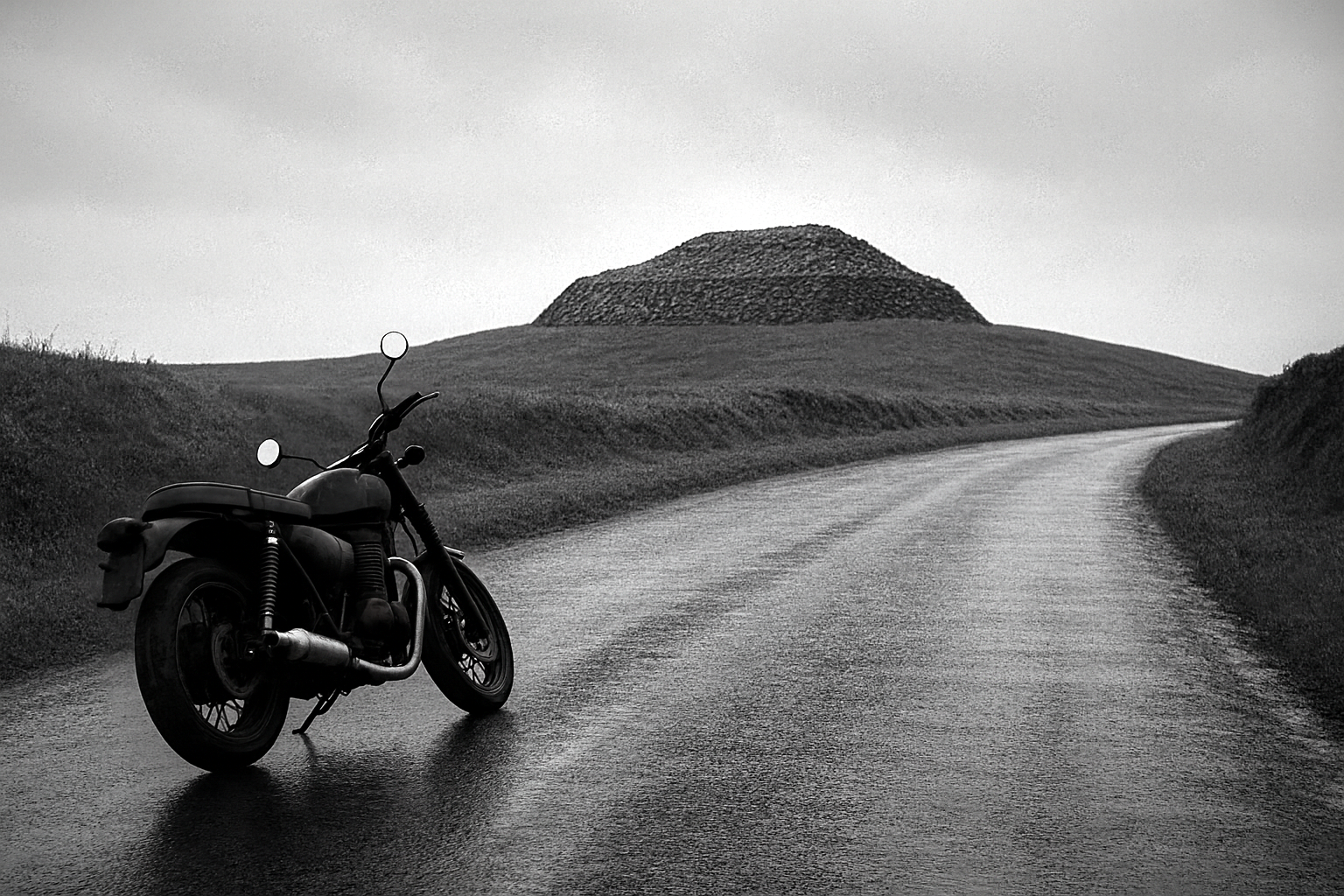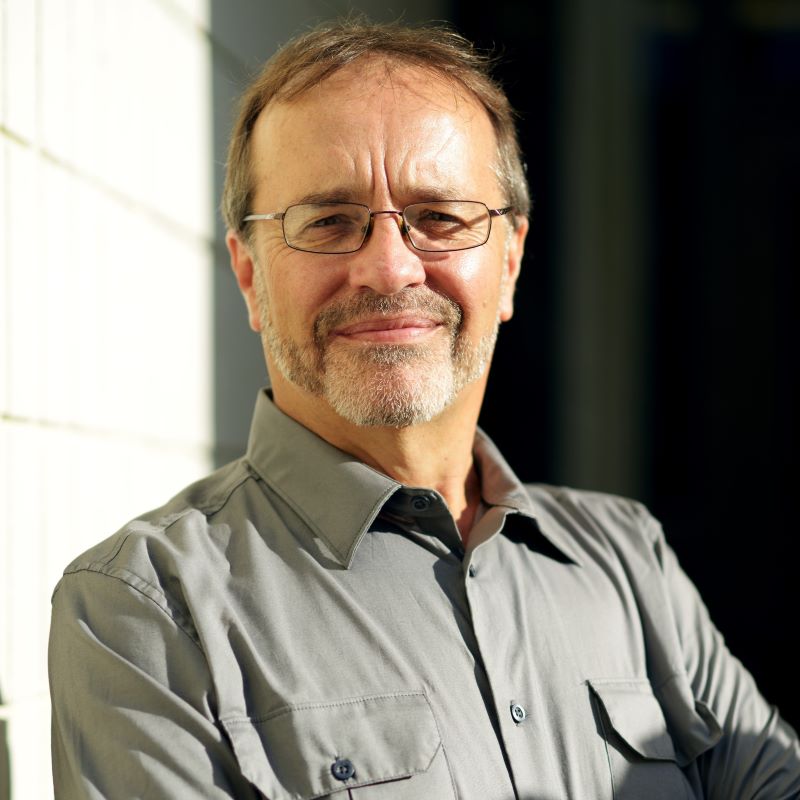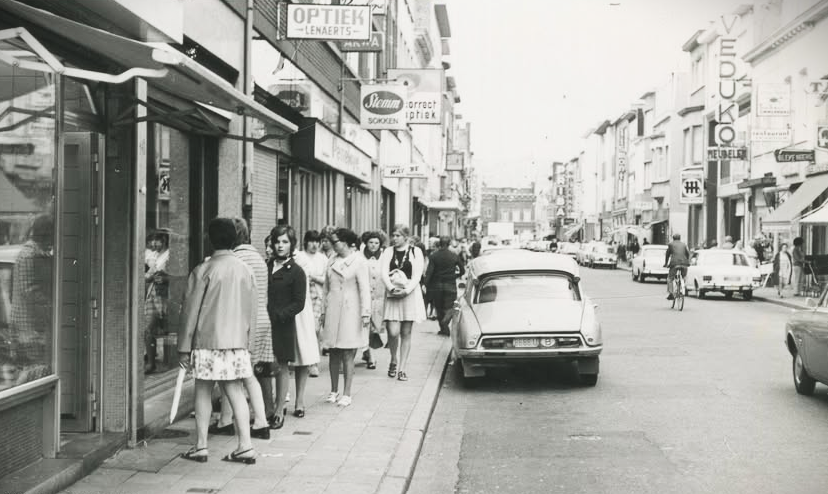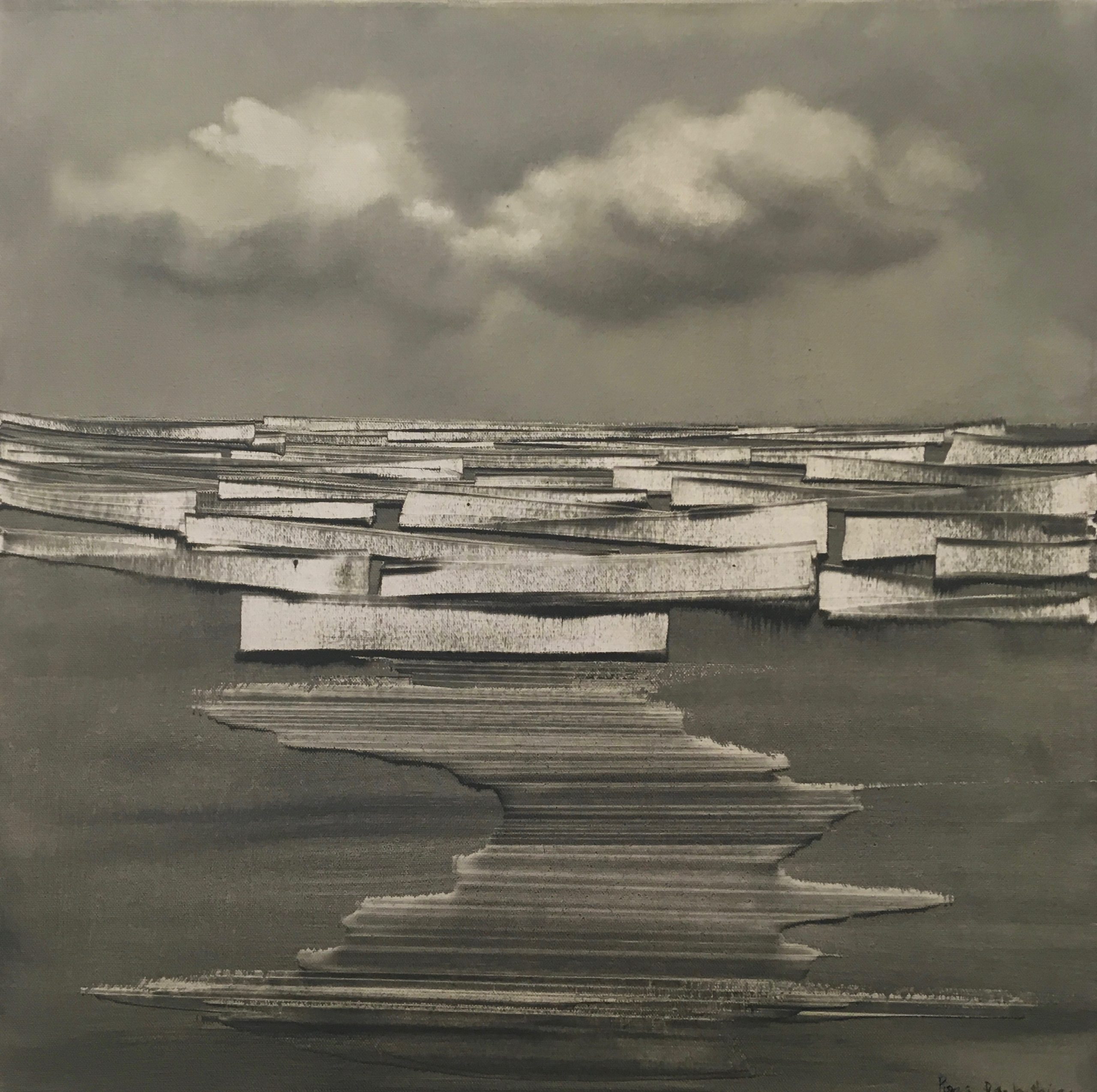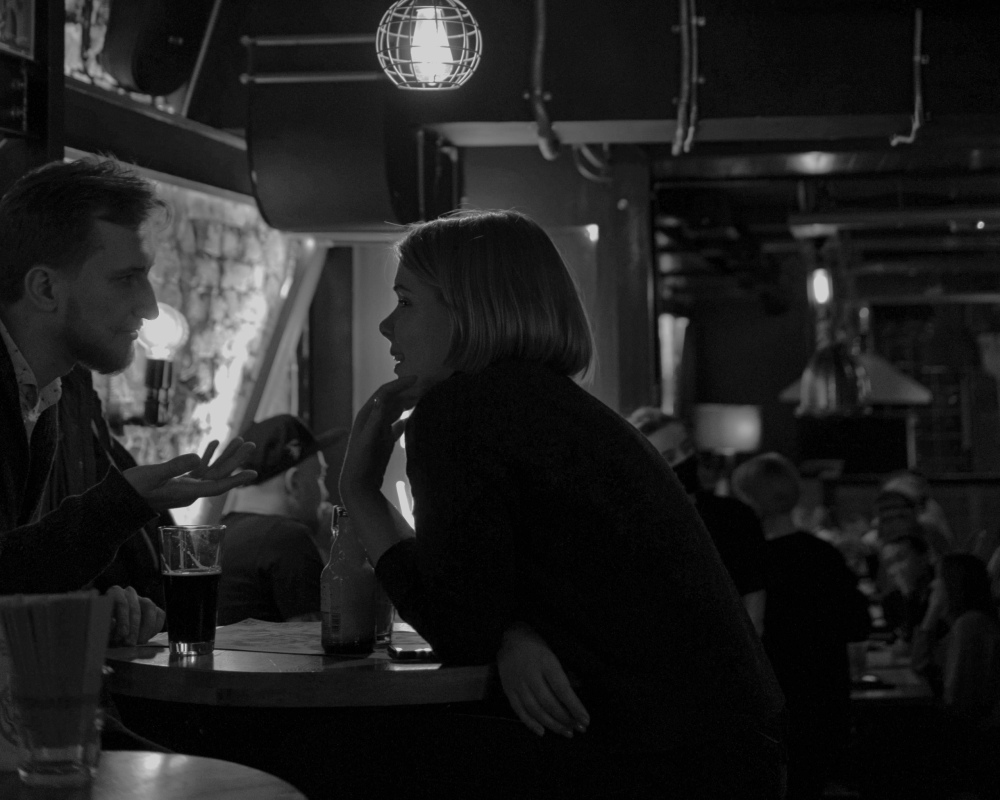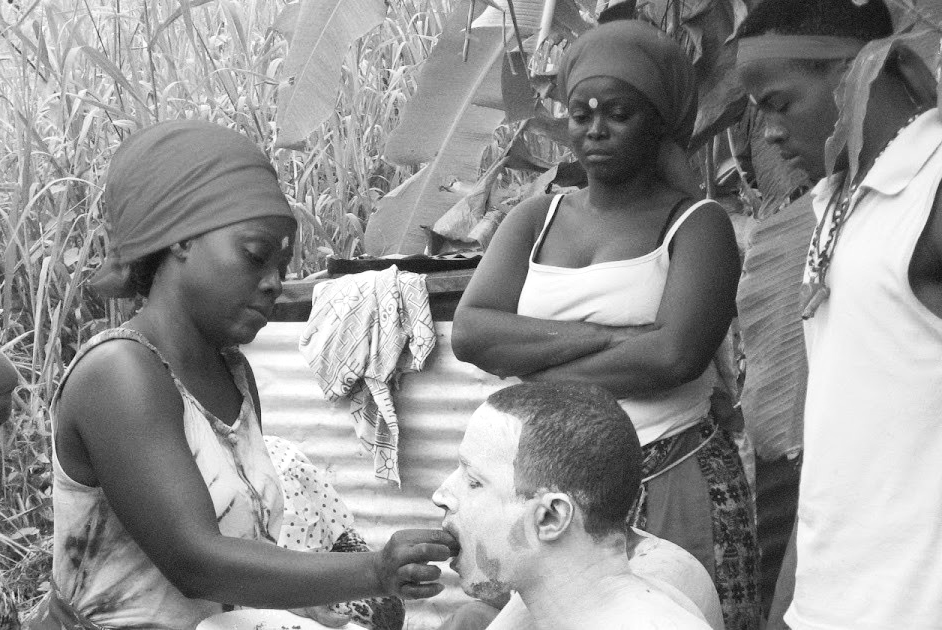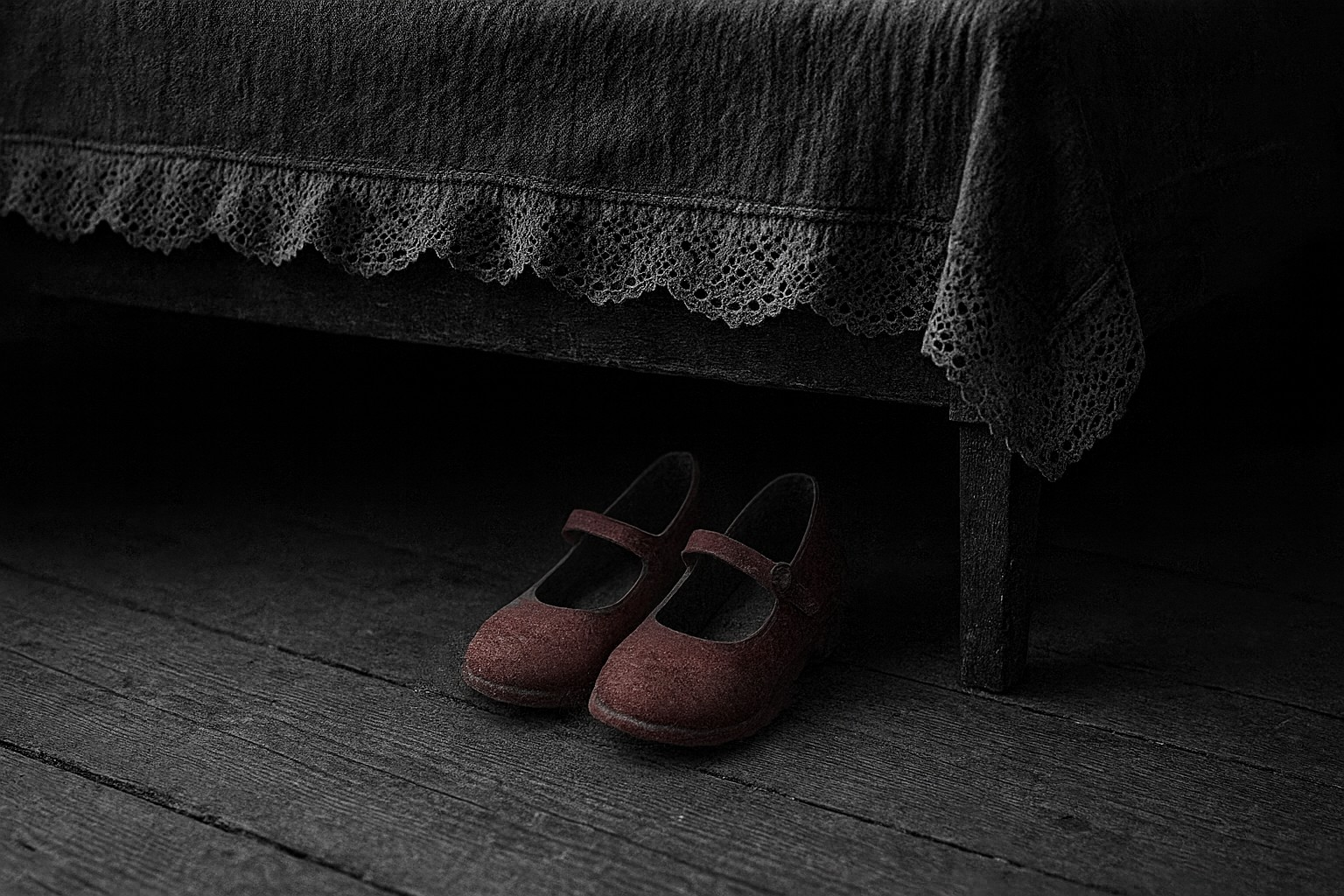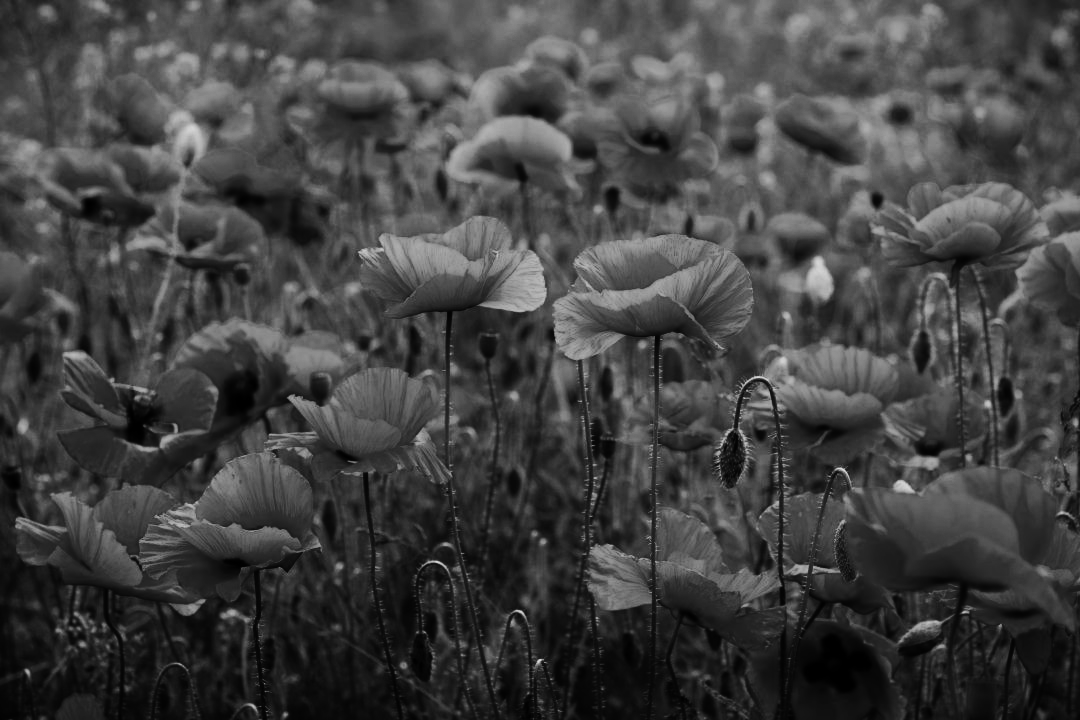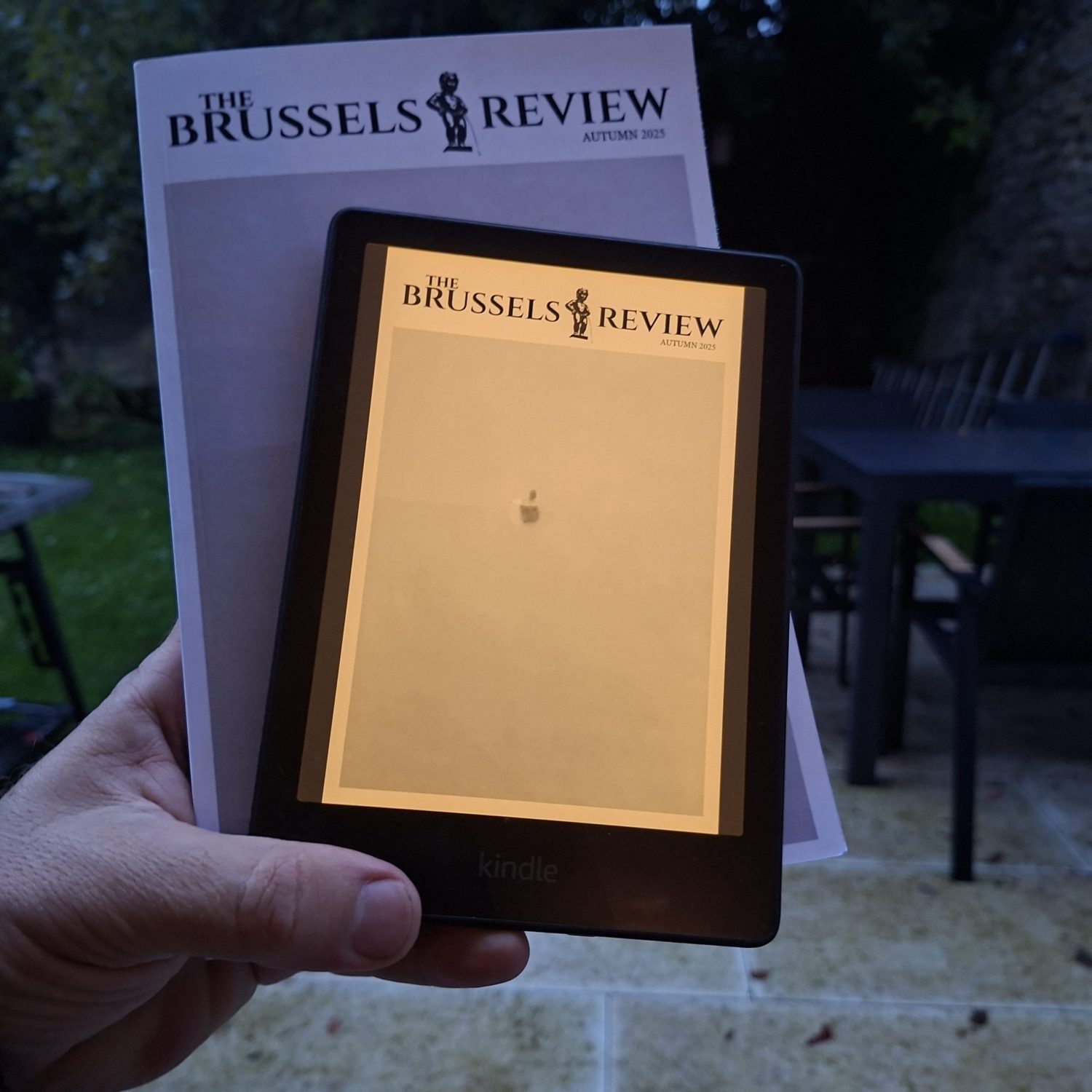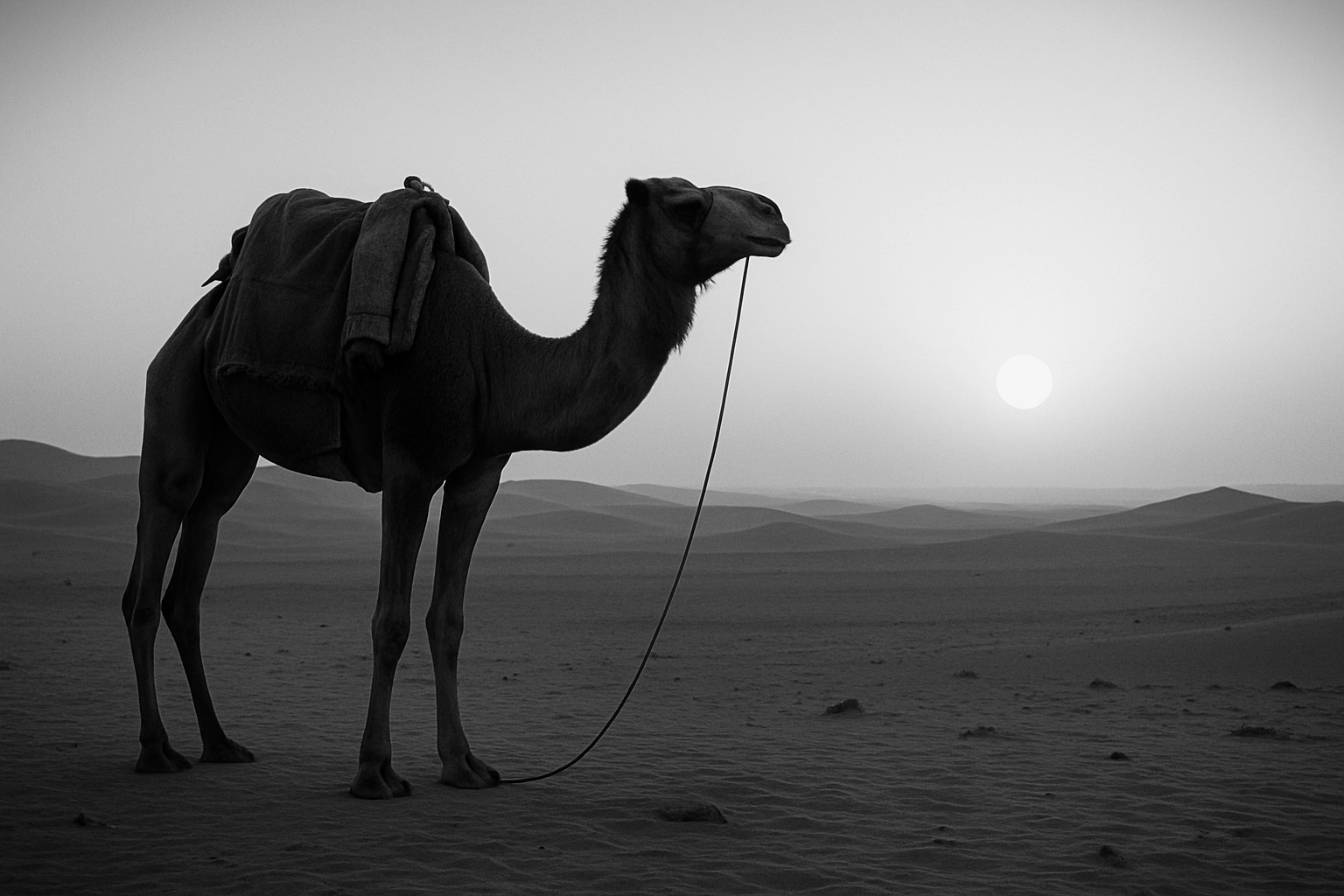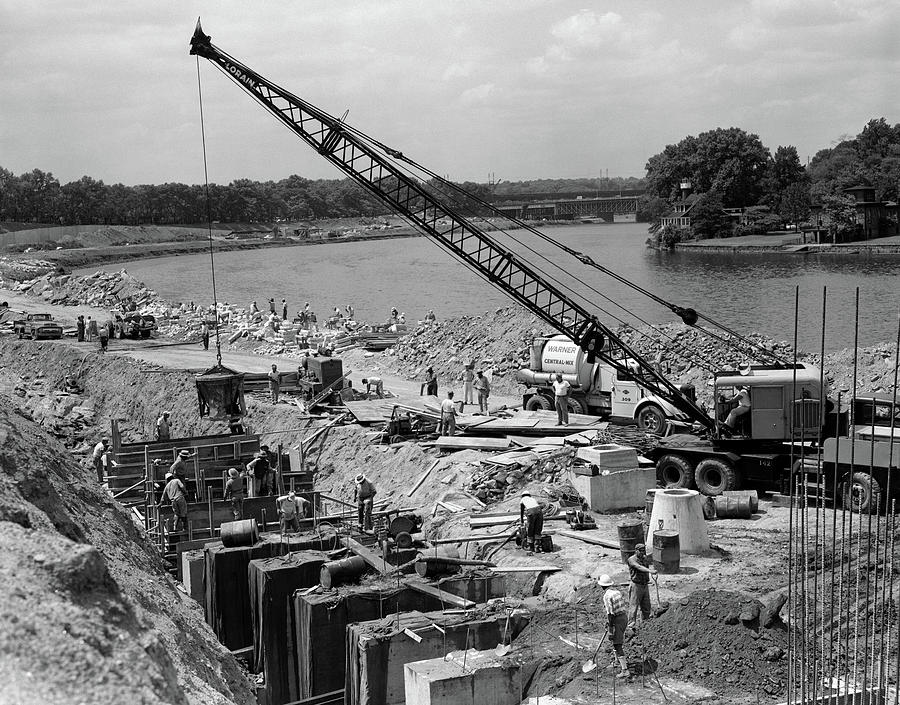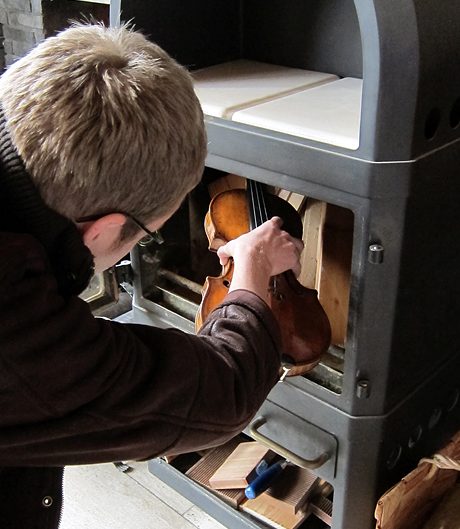Small drops of rain tapped my shoulders and the top of my head in the parking lot of a roadside hotel outside of St. Brieuc while I attached the trunks to the motorcycle. The morning sky pressed down, a low blotch of grey. At eight in the morning, several people ate breakfast in the minuscule hotel lobby. I’d taken the hotel’s breakfast because the one café around me, the only other eating establishment beside the Buffalo Grille, did not open for breakfast and in France finding a café open for breakfast was not a sure thing. The chain restaurants, so ubiquitous along the American interstates, had not yet invaded France, no Waffle House, or IHOP to name two.
Last night after dinner the day had faded into a late twilight of blue shadows. The red sun tinted the far-off trees and the windows of the closed car dealerships and small warehouse businesses that surrounded the hotel a tawny gold. I sat in the heated room with a case propping the door open even though little air made its way in. I searched on the little laptop for a camera store or a mall with a department store with an electronics department having accidentally flung my American camera in a great arc onto the stone streets of Mont Saint Michel. The tether around my wrist had slid off with the help of the sweat covering my wrist and hand. I located something that looked like a mall or several large stores all in one place not far from the hotel.
At 9 AM I sat in the small breakfast area drinking coffee even though the store hours said it opened at nine. In Paris, I’d arrived at a phone store to replace my Portuguese sim with a French sim even though the EU had passed a law that said any sim card was good in any EU country. The Portuguese company did not adhere to that rule as I was racking up roaming charges while in Paris. The Paris store’s posted hour to open was ten in the morning. I arrived at ten to get the card and be on my way exploring the city of light. At half-past ten I walked across the street to a café to wait and at eleven-fifteen gave up and found another store. I did not believe that any of the stores at the mall would be much different.
In intermittent light rain, a conglomeration of buildings sat helter-skelter between even larger parking lots, large warehouse looking things, very industrial looking with little effort to stylize the fronts. I had no idea which store might have a camera. I chose the closest monstrous warehouse-looking building. Curbs had been put in odd places to make you drive around them.
Inside the store, people pushed around carts with wallboards and doors or carried cans of paint. Even without the sun rising at five in the morning, or the heat of the last few days, over the previous two weeks I had become accustomed to being one of the first non-delivery people on the streets in Paris. Here DIYers jammed the aisles as they waited for checkout. The French seemed to have embraced the DIY thing as much as Americans, a skill of which I am barely proficient. However, the problem with these mega-box stores is that, through standardizing their products, they have standardized homes, which would seem problematic in a country built out of stone. I cannot imagine the nightmare of renovating a five-hundred-year-old stone house. How do you plumb, run electric wire, or even find the type of woodwork? This is not even discussing the lack of squareness of said house. Because I’d had all those experiences renovating houses less than one hundred years old, I felt closer to these people up and busy at this time. However, this was not the store I needed.
As I turned to go, a rather tall and imposing man dressed in what looked a bit like a guard’s uniform, approached and asked me if he could help. I would not put him into the category of l’homme badass, those French men with tight shirts over hard gym-worked muscles, more old-school imposing in the way he carried himself, his smile, not quite a smile as if he’d had many a confrontation and had won most of them. I attempted to apologize for being in the wrong store. He immediately realized I spoke horrible French because I was an American and called over a young woman dressed in what looked to be standard lower manager clothing, a white blouse and a plain navy skirt, low heels, with her long brown hair held back away from her face by turtle-shell barrettes. She spoke better English than the guard did, but still worse than I spoke French, which said something.
I said in my best French, “Je ne veux pas de ce magasin.” I hoped it meant I did not want the store or maybe I did not want the grocery store, who knew? Perhaps I’d said I did not want to buy the store. They seemed to think I should leave that decision to them. I finally said, “Je veux une camera.”
The big guy walked over to his desk, picked up the phone, and paged someone. The woman in the blue skirt told me they’d sent for the manager. The manager spoke decent English. After the introduction and a little pow-wow amongst the three of them, obviously, about me, the manager pointed to the back of the store and explained that if I went behind this building, I could find a camera at another store called, and it sounded like “carfou.”
Behind the DYI store, across another parking lot that seemed to have been designed by Salvador Dali, stood another huge and still industrial-looking store, among other large and industrial-looking stores, called “Carrefour.” Why they didn’t either line the stores up all in a row or have them face each other, I didn’t know. No organizational principle seemed to have been implemented for any of it. I took about ten minutes to pick out a camera and another box of granola bars, and I hit the road to the cairn.
Some travel writers have expressed, if not loathing, for the way I was running around France, then dislike. They assert that one should concentrate on one small area. Several reasons may exist for doing this, biting off small pieces of a country as if it were a strong French cheese, but several reasons exist for doing it my way. If we use the cheese metaphor, I had decided to take little bites of a bunch of cheeses, not eliminating the cheeses I did not like, but finding the cheeses I wanted to explore more. Settling into one area without seeing the others is like buying just one cheese and having no idea what it tastes like compared to other cheese, or how it will go with other things in your meal.
Travel writers also have the habit of condemning people either outwardly or by innuendo for not being interested in the things they see as important, which is quite snotty, if not haughty or snooty, and an overly privileged sort of thing. It is a class thing, by which I mean an attempt at being a tastemaker and by doing so creating criteria for inclusion and exclusion and most importantly setting oneself up as an authority. Yes, any country has a lot to offer, which might be better perused first.
A friend gave me his old Blue Guide to France, a rather comprehensive guide of cities, towns, and areas of France if a bit sketchy (and maybe biased, although sometimes brutally truthful) in the information of most places. It piqued my interest in what others not in the tourist biz had to say about France. I made a trip to the library on campus to see what it had. Most of it was fairly old, which meant most of the books ran the old conservative line of received history. I am by no means a historian, mostly because, I have awoken to the politically biased side of received history, at this time in America, something akin to being a witch. I have been suspicious of the purposes and ideology of the writers and publishers of these books. As John Gillin states in “Methodological Problems in the Anthropological Study of Modern Cultures,”
The total cultural system in any specific case is governed by certain underlying assumptions, orientations, or controlling mental patterns. Other words used to describe these features of a culture are ethos, themes, and value-attitude systems. Such underlying assumptions or controlling mental patterns are often not made consciously explicit.
The point (and it is very ironic) is that this statement applies to the ones who study as well as the studied. I read the books taking this into account. Of all the books I read, a textbook, Europe and the Middle Ages 3rd edition by Edward Peters seemed, not so much to have an alternate view of old Europe including France, but a very nuanced view. I needed to see this other France’s different history, not of the FDWGs (famous dead white guys). If I wanted to know about these guys, (which means, of course not know) I could do that well enough at home.
Motorcycle riding does this to a person, allowing them to get introspective. You start out taking in the day, the landscape, and houses, and soon you’re wondering why everything is the way it appears. What forces drove things to be that way? Then suddenly you decompress and expand out of the tight, compact person society has made you. It is a freedom seldom felt by many people who do not ride. I think real wilderness hikers might feel the same thing, although, like the tourists I’d seen in Paris, I suspect a lot of hikers, especially the nattily clothed ones, only do it so they can say they are hikers or have hiked.
The flat land, gold-brown ripening fields, and green pastures sat subdued by the day and intermittent rain. Even though my rain jacket tended to warm things up, the cool air achieved a sort of equilibrium. East of Morlaix I turned north. The terrain changed quickly to wooded hills and deep streams that cut the bottom of valleys. Few cars plied the road. I popped up out of the small tight gorges into areas of flat cultivated land. I turned onto Route de Saint Antione. A sign with Cairn de Barnénez printed on it pointed the way, only four inches high and maybe two and a half feet long but still a sign.
Small shrubs separated the pavement from the sidewalk as I entered Plouezoc’H. The rain had washed away the summer languidness so trees and bushes illuminated shades of green, the stucco houses had been done up neatly in light cream, quoins of raw stone, shutters newly painted that French blue shade stipulated by law or why does every house have that same shade? Those creamy rubble houses and fences were squarely pointed, and flowers hung out of flowerboxes of almost every window. Either the citizens took great pride in their village, someone had formed an HOA for the entire town, the town had gotten some extra cash and had decided to use it to restore the buildings, or people with money, seeking status, owned everything. To be honest, other buildings needed a little work, and some yards had spotty grass, but overall, the town exuded a kind of properness.
Kernéléhen a small village of one or two streets just south of the Cairn, sat on a finger of land between the shallow bay of Anse de Térénez and the Rade de Morlaix, a larger cove carved out by the Riviere de Morlaix. Some houses looked to have been lived in for centuries without much change. Other buildings had been updated or were in the throes of being updated. I feared my intuition concerning Plouezoc’H had been correct and wealthy foreigners, meaning we English speakers, had reclaimed the town, although it could very well have been French people escaping the summer heat.
Google Maps shows the Anse de Térénez full of boats and water. However, only a few wooden, working boats with small cuddy cabins listed in the shallow muddy bay. With the tide ebbing (I thought), the deep draft sailboats and pleasure boats had gone to deeper water. Oddly enough, almost no houses stood at the edge of the bay, wherever that might be, and no dock stretched its long tentacle into the water. Who knew, there might have been a law against it, but I thought like an American used to seeing every inch of shoreland grabbed up by developers and couldn’t imagine why some greedy real estate speculator had not already begun to build high rises along the shore.
The entrance to the building leading to the cairn disappeared into the side of the hill. The building was all of three small rooms. An older gentleman, bald except for a ring of close-cropped white hair, stood behind a low counter with short racks of postcards and books about the cairn. A tiny museum took up the second room with artifacts from the cairn displayed under glass, bits of pottery, and tools ranging from the Neolithic to Bronze Age periods. I wondered how I might feel about my old broken stuff being displayed after five thousand years. The third room had benches and a flat-screen TV that continually played a video about the cairn in at least three languages. I waited for English and then spent a bit of time looking at the artifacts and the books and other souvenirs because everything was free. To go out the back and up the hill to the cairn costs eight Euros which I paid.
A worn grass path took me to the top of a steep grassy hill, not the “I might fall off and hurt myself” kind of steep, but the “my calves are killing me” steep. Other than the absence of a café or convenient souvenir shop selling sweatshirts saying “My parents visited the Cairn de Barnénez and all I got was this lousy shirt,” the steepness of the hill took it out of a main tourist attraction. You have to think about the cairn, maybe a lot, to understand and appreciate it.
Neatly stacked stones stretched across the top of a tall hill, for about two hundred and forty feet stacked 26 feet high and about 80 feet wide or approximately 72x25x 8 meters. No one seems sure of its actual purpose. Some authorities (and I have no idea who they are) think stone-age people used it for funerary purposes. Hey, don’t we give the dead the best views? Eleven chambers existed in total, some with art or symbols on the walls, however, you might interpret them. It was thought to be a tumulus until the owner of the land began quarrying the stone (meaning stealing) and uncovered a chamber. The cairn is one of the oldest constructions known to man, much older than the pyramids. Amazingly 7000 years ago and even earlier, people probably lived in the village where Kernéléhen now stood. They probably hunted these woods, fished in the bay, and gathered or grew grain in some of the open areas. The place would have killed an American real estate developer knowing that he could never get hold of the prime real estate in the area because someone got there 6500 to 7000 years before him.
I had initially planned to visit the Lascaux Caves to view for myself the artist’s incredible sense of aesthetics, drawings that looked to be studies in form, in perspective, in line and shape, and in the struggle to capture movement. It is the same mind. The only difference between us and people living 7000 years ago or even 20, 000 years before us, is the knowledge base we have to draw upon. I had finally crossed off the Lascaux Caves because they had closed them, and for good reason and because even though I had a month open, there was still not enough time to see everything. Mold, caused by the interference of humans, their soggy breath, and the summer tourists’ failure to stay, shall we say, fresh, began attacking the walls of the cave. I was still unsure how I felt seeing replicas of villages or cities and not sure how I felt about people going to the Lascaux Caves and taking selfies of themselves in front of reproductions of paintings. Something important here seemed to be lost as if somehow, we were losing touch with, not just history or the past, but also losing touch with reality, where the replica is good enough and can substitute for the real thing. As with St Malo, to grasp the walled city’s true meaning, you must find those few hidden traces of the bombed-out buildings. Only then can the city in its entirety and the people’s resiliency be known, not to mention that our written history is that of destruction. With the Lascaux Caves, you must see the replicas as replicas of something amazing. You must say you did not visit the caves.
I stood at the top of the hill after circumnavigating the cairn again as the sky seemed to be lowering. Someone had placed drawings and paintings around it. I could not figure out what they had to do with the cairn in any aspect, but getting a camera had put me behind schedule, and I wanted to be in Plage Cap Coz tonight on the southern edge of the Brittany peninsula. That I’d hardly explored any of the north coast, all the small towns, was another reason to come back.

